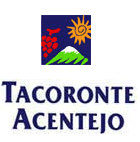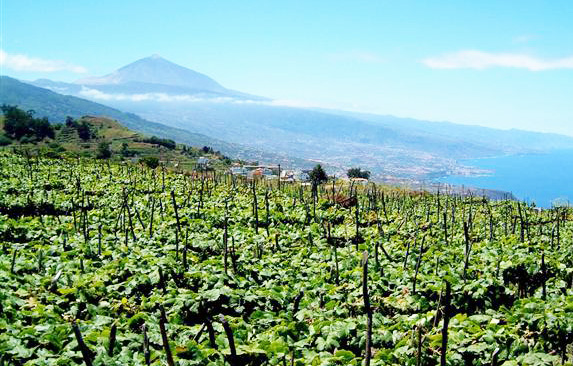Designation of origin Tacoronte Acentejo

The Canaries were not colonized by the Europeans until the XV century, and it was only then that the vine was introduced to the islands. Because the settlers didn't want to have to wait for the wine to come all the way from the mainland (with all the perils this entailed: pirate attacks, shipwrecks and much more..) they introduced the best stock they had so that production would be quicker. The results were so good that the Canary wine exportations began during the XVI century, mainly to England, Flandes, Hamburg as well as the various Spanish and Portuguese colonies in Africa and the New World.
The History of Tacoronte - Acentejo
The reasons for the popularity of the Canary wines were: the decline of the sugar cane, which was now being produced massively in the New World; the perfect geographical situation the Canaries have for trade, right in the middle of the main trade routes; and the high quality of the "malvasía" wine, which reached such high levels of quality that it was found on the tables of monarchs all around the world. It was due to these factors that the wine industry on the islands grew and grew, and why Canary wines became so widespread throughout the world.

Although very popular and coveted for a long time, Canary wines began to see a decline after a series of events: the independence of Portugal from Castile (which meant Castile lost most of its colonies); the marriage of Charles II with the portuguese Catherine of Braganza, which eased England's trades with Madeira, Azores and Portugal and endangered their trades with the Canaries; the Navigation Acts established in 1661 by the English monarch and, last but not least, the creation of the "Canary Company" in 1665, through which the English sold Canary wines at a lower cost, successfully establishing a monopoly on the wine.
It all went downwards from there onwards. The Canary wine trade lost all its importance, especially after a couple of plagues at the end of the 1800 which managed to destroy most of the vineyards located on the islands. The first designation of origin was established in 1985, and the rest followed. The wine industry in the Canary Islands has started to pick up, and its wines are still quite well considered throughout Spain and abroad today.
DO Tacoronte - Acentejo in modern days
The DO Tacoronte - Acentejo is one of Tenerife's designations of origin. Established in 1992, it was the first wine country in the island to get this recognition. There are around 50 cellars registered under this DO, and it's the biggest one located on the island of Tenerife. The landscapes around the Tacoronte - Acentejo wine region are breathtaking, with deep valleys and high mountains, green and lush. The last two decades have seen a change in Tacoronte - Acentejo, with a modernization of machinery and techniques, to create wines of a very particular style. Tacoronte - Acentejo has served as inspiration for the rest of the designations of origin in the Canaries. If you ever get a chance to visit Tenerife, make sure you pay a trip to some of these wine cellars - that's if you can tear youself away from the wonderful beaches and gorgeous scenery!
Its setting in the northern slope of the Cordillera Dorsal means the vines get all the humidity from the trade winds of the Atlantic. However, thanks to the island's steep and varied terrain, there are actually a number of microclimates found on the islands which mean that a variety of different grapes may be grown. The DO Tacoronte - Acentejo produces more reds than whites, unlike most of the other designations of origin in the islands. The main grape varieties used are Listán Negro and Negramoll for the reds and Listán Blanco, Moscatel and Malvasía for the whites. There are other varieties allowed, like Castellana Negra, Tintilla, Gual or Pedro Ximénez, but they aren't very common.
DO Tacoronte - Acentejo wines have the following alcohol content:
- Red wine, with a minimum alcohol content between 12% and 13%
- White wine, with a minimum alcohol content between 11% and 12%
- Rosé wine, with a minimum alcohol content of 12.5%
Spanish Wine History
Spanish Wine Regions and DO
Spanish Wine Tours
Top Spanish designations of origin
Best Spanish Wines
Spanish Wine Production
Spanish Wine Types
Spanish Grapes
Spanish Sparkling Wine: Cava
Sherry Wine
Spanish Wine Cocktails
Spanish Wines in the World
Spanish Wine Prizes
Enotourism
Spanish spirits and liquors
Argentina Wines
Chilean Wines
Other sites